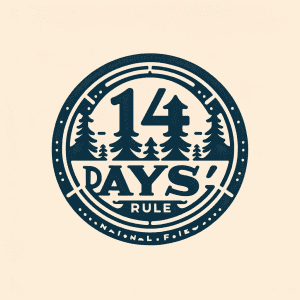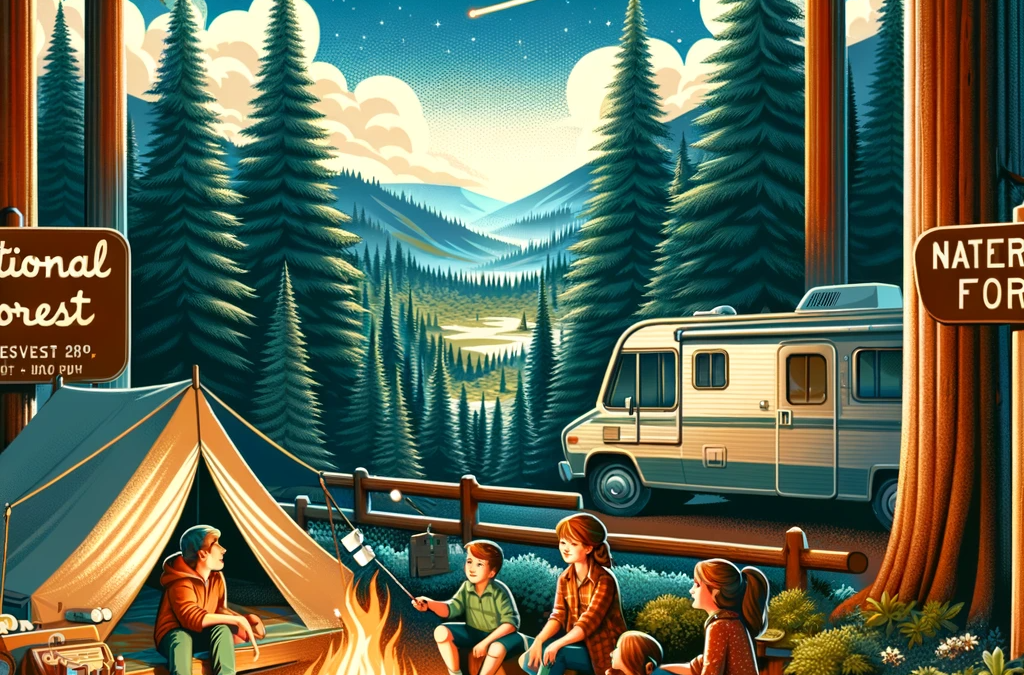Your Guide to Extended Camping Trips
Are you dreaming of a long, adventurous journey through America’s National Forests? Many travelers and campers share the allure of exploring these vast natural landscapes. A common question that arises is: Can you travel from one National Forest campground to another, staying up to 14 days at each for free? The answer is yes, with some important details to consider.

Understanding the 14-Day Rule
The most well-known rule about camping in National Forests is the 14-day stay. However, this isn’t a one-size-fits-all regulation. The allowed duration can vary significantly from one forest to another, ranging from as few as 5 days to as long as 30 days. Each forest and grassland sets its own occupancy rules, which may include specifics on how long you can camp within their boundaries, when you can return to the same site, and the total days allowed for camping throughout the year.
Dispersed Camping
For those interested in ‘dispersed camping’ or ‘boondocking,’ these areas in National Forests usually permit camping up to 14 days. This type of camping means setting up in previously-used sites off forest service roads, though there are exceptions to this as well.
Permits and Passes:
While most National Forests don’t require a fee or permit for camping, there are exceptions. Depending on the area, you may need an Adventure Pass or an America the Beautiful Pass. The Adventure Pass, typically used in designated recreation areas, might be free or cost up to $30 per day. For extended stays, consider an annual pass. The America the Beautiful Pass grants access to over 2,000 federal recreation sites and is valid for a year.
Dealing with Fire Restrictions
In areas with fire restrictions, like during droughts or high fire danger ratings, a Campfire Permit might be necessary. This permit allows campfires outside of designated rings and outlines other regulations, such as food storage requirements.
Planning Your Trip
Before you set off on your National Forest adventure, research is key. Knowing the specific permits and passes required for your intended camping area is crucial. These permits can often be purchased online or at ranger stations near your destination.
Adhering to Specific Rules
It’s important to note that National Forest camping rules can be more lenient than those in National Parks. Activities like hunting, having dogs on trails, and using motorized vehicles might be permissible in National Forests. However, strict rules are in place for designated wilderness areas and other sensitive regions.
Booking and Fees
Lastly, not all National Forest campgrounds are free, especially those offering more amenities. Some may require reservations or have associated fees, so it’s essential to check this information in advance.
Conclusion
Embarking on a camping journey through America’s National Forests can be an enriching and memorable experience. By understanding the specific rules, permits, and conditions of each forest and campground, you can fully enjoy the beauty and serenity of these natural treasures. Happy camping!
Resources
- U.S. Forest Service (USFS) Official Site: This government website provides official information about National Forests, including rules, permits, and camping guidelines.
- National Park Service (NPS) Official Site: As a federal agency that manages all national parks and many national monuments, the NPS site offers authoritative information on camping in natural reserves.
- Recreation.gov: This site is an interagency collaboration that provides information on outdoor recreation opportunities and reservation services for federal lands, including National Forests.
- USDA Forest Service – Dispersed Camping Guidelines: This page specifically focuses on dispersed camping guidelines in National Forests, providing detailed and reliable information.
- America the Beautiful Pass Official Information: For detailed information about the pass that grants access to federal recreation sites, including National Forests.

